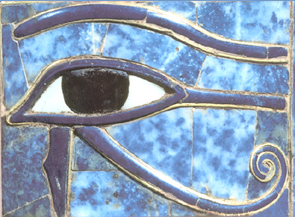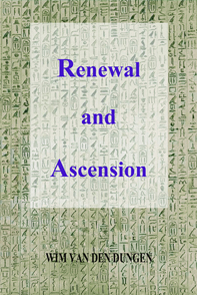|
These texts
were written on papyrus, wood or stone. The large quantity of papyri still
untranslated, allow to conjecture in the future new categories or subcategories
will
come to light. The sheer
quantity of available sources is remarkable if compared to, for example,
Archaic and Classical Greece. For our purposes, the
literary sources are restricted to the native period (i.e. from Terminal Predynastic Egypt until the end of the New Kingdom).
modes
of thought |
examples
in Egyptian literature |
major
stages of growth in the formation of Middle Egyptian |
mythical
sensori-motoric |
Gerzean ware design schemata,
early palettes |
individual
hieroglyps, no texts, no grammar, cartoon-like style
|
pre-rational
pre-operatoric |
Relief
of Snefru, Biography of Methen, Sinai
Inscriptions, Testamentary
Enactment,
Pyramid
Texts |
individual
words with archaic sentences, a very rudimentary grammar to simple sentences in the
"record" style of the Old Kingdom
|
proto-rational
concrete
operations |
Maxims of Ptahhotep,
Coffin Texts, Sapiental literature, ...
Great Hymn to
the Aten ...
Memphis Theology |
from
simple sentences to the classical form of a literary language capable of
further change
|
The
development of Egyptian literature, from solitary hieroglyphs to its
classical form, follows the universal cognitive characteristics of the
early stages of the development of our capacity to think, the
"ante-rational" stage of cognition, linked with the imaginal,
the sensorial, the concrete and the context-bound.
An understanding of
these characteristics is helpful to discover the complex layeredness or
linguistic stratification mentioned by most egyptologists, allowing us to
compare any Egyptian text, as if it were an archeological object on its
own. The logic of each stratum has never been defined before, nor were Egyptian texts
read with this "filter" in mind. Doing so, thanks to Piaget and
his suite, reveals three fundamental types of logics simultaneously at work
in the instinctual mind of the Egyptians (like different, at times, interacting strata) :
-
mythical
logic : return to the adualism of the "first occasion"
(zep tepy), annihilating any clear distinction between the source of thought
and the clustering, constellational set of thoughts put together on
the basis of a shared concrete meaning, explicit or not, in terms of
physical processes, in particular any rhythmical or recurring pattern.
This return always implies the pantheon and its primordial,
pre-mythohistorical founding sense ;
-
pre-rational
logic : the formation of pre-concepts and a stable source of
thought or primitive subjectivity, still linked to the coordination of
actions (and not yet, to a concrete conceptual model). Psychomorph, active
iconization happens and grammatical structures are worked out.
Contradictions are not reconciled. Concepts have no stability outside
their ritual or practical use, linked to person(s), place and time.
The process of the creation of meaning and cognitive inventiveness
remains triggered ;
-
proto-rational
logic : on the
basis of a conceptual structure, which has the necessary practical
(not theoretical) tools to manipulate thoughts to solve problems,
subject and object are clearly distinguished. This never leads to any discursive articulation (and its conceptual
freedom), because of the contextuality of the concrete operations to
which this logic is bound.
|

